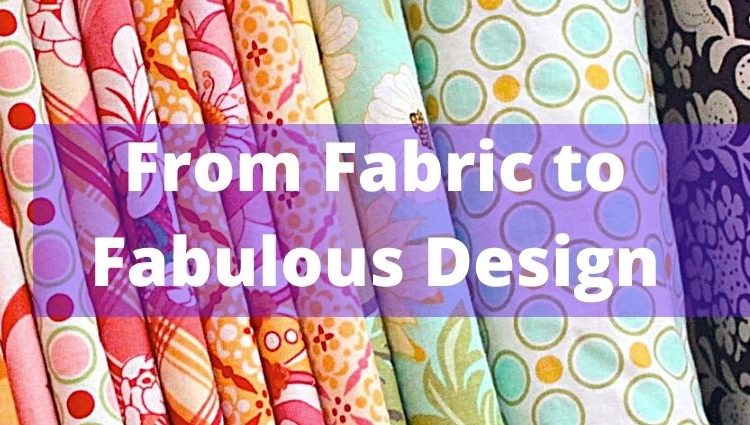Many people are often faced with the design dilemma of changing the look of an entire room without blowing the budget. This means that in effect, major changes in furniture, structural renovations to the home, and any other major overhaul, are out of the question.
However, if there’s one thing that do-it-yourselfers and professional designers agree on, it’s the capacity of fabric in various textures and colors to bring life to a room. Fabric, when incorporated properly, can define the theme for the season or the mood of the room, and can bring life to even the dullest spaces.
Here are some fabulous ideas to incorporate fabric in different places in the home
Window Treatments
 A window positioned anywhere in a room provides a dramatic statement, a focal point, or may even provide an opportunity to bring the outdoors inside the room. With window treatments, fabrics may be used in curtains and window valances.
A window positioned anywhere in a room provides a dramatic statement, a focal point, or may even provide an opportunity to bring the outdoors inside the room. With window treatments, fabrics may be used in curtains and window valances.
In order to provide a dramatic statement in a room via the window treatment, you can make use of two extreme types of fabrics—either heavy, rich-colored fabrics, or sheer draperies: or possibly a combination of both. Heavy, rich-colored fabrics make a dramatic statement with their strong colors and eye-catching patterns (like damasks, flower prints, stripes, etc.). Sheer draperies, on the other hand, bring a light, sunny feeling to the room by letting in just enough sunlight, yet allowing for a light and flirty curtain solution.
Used together, putting sheers behind the heavy fabric draperies, provides texture and color contrast. The heavy fabric draperies may be opened in the morning with the use of trimmings and tassels, allowing for sunlight to come through the sheer draperies. To create a more formal feeling, some of the heavy fabric draperies may be incorporated into a window valance.
Check Out: Energy-saving Weather stripping and Window Coverings
The Sitting Area
 In rooms like the living room and the dining area, the sitting area comprises much of the space. This means that most of the design that can be incorporated into the room must come from the sitting area, if it is to make a visual impact.
In rooms like the living room and the dining area, the sitting area comprises much of the space. This means that most of the design that can be incorporated into the room must come from the sitting area, if it is to make a visual impact.
For the living room, fabrics are the best solutions to provide either temporary or permanent overhauls for the sofa or couch. Sofas that are badly stained or worn may be taken to a shop for re-upholstery. When re-upholstering the furniture, the extent of damage equates to the amount of repair that the sofa will undergo—some may only need a small amount of repair while others need major repair: such as the foam completely changed or complete over-haul. Re-upholstery entails the permanent change of the outer skin or covering of the sofa using new fabric or a covering material such as faux leather. When choosing the fabric for re-upholstering, choose one that will blend in with various color schemes, as re-upholstery is permanent in nature.
For temporary punches of life, color, or even design themes, slipcovers are the better choice. Slipcovers are available ready-made in department stores, or you may have them custom-made especially for your sofa to assure a snug-fit. Slipcovers will allow for seasonal color changes of the room, and even for mixing and matching the sofa with other furniture or accessories to better suit the décor of the room.
For the dining area, the dining chairs or stools may be fitted with covers and skirts for a more decorative effect or to better continue a color scheme in the room.
Check Out: Ideas for Decorating a Living Room on a Budget
Tables Around the House
Fabric table covers serve two important purposes – they bring colors, patterns, and excitement to a room’s design, and protect the table from water or other corrosive materials that come in contact with it. When using fabrics on tables, you may experiment with various lengths – using long fabrics to cover the entire table for a formal effect, shorter fabric to fit the table top exactly to allow for storage under the table, or as a long, thin, table runner to bring drama to a table and emphasis to the table décor.
Fabric is used in these various scenarios is, primarily, to bring color or color themes into the room. The use of fabrics by themselves or in color and pattern combinations allows you to mix and match as you wish. The same colors used over and over again in a room poses no threat when working with fabric, because with fabric, you may use the same color in various shades, patterns, and fabric textures to avoid monotony.
Depending on its use, fabrics can bring unique moods to a room. Heavy, rich-colored and textured fabrics usually bring a more formal, ornate feel to a room, while sheer fabrics used in windows, made to hang over bare walls, or even just thrown over the back of a couch or an ottoman bring a fun, flirty feel to a room.
Used properly, fabrics achieve design changes at a cheaper price and with less effort. Fabrics take the place of added accessories and furniture, create as much impact as a new coat of paint or wallpaper, and allow for versatility of design by mixing and matching, and temporary solutions such as slipcovers at a fraction of the cost of permanent changes.



Comments are closed, but trackbacks and pingbacks are open.